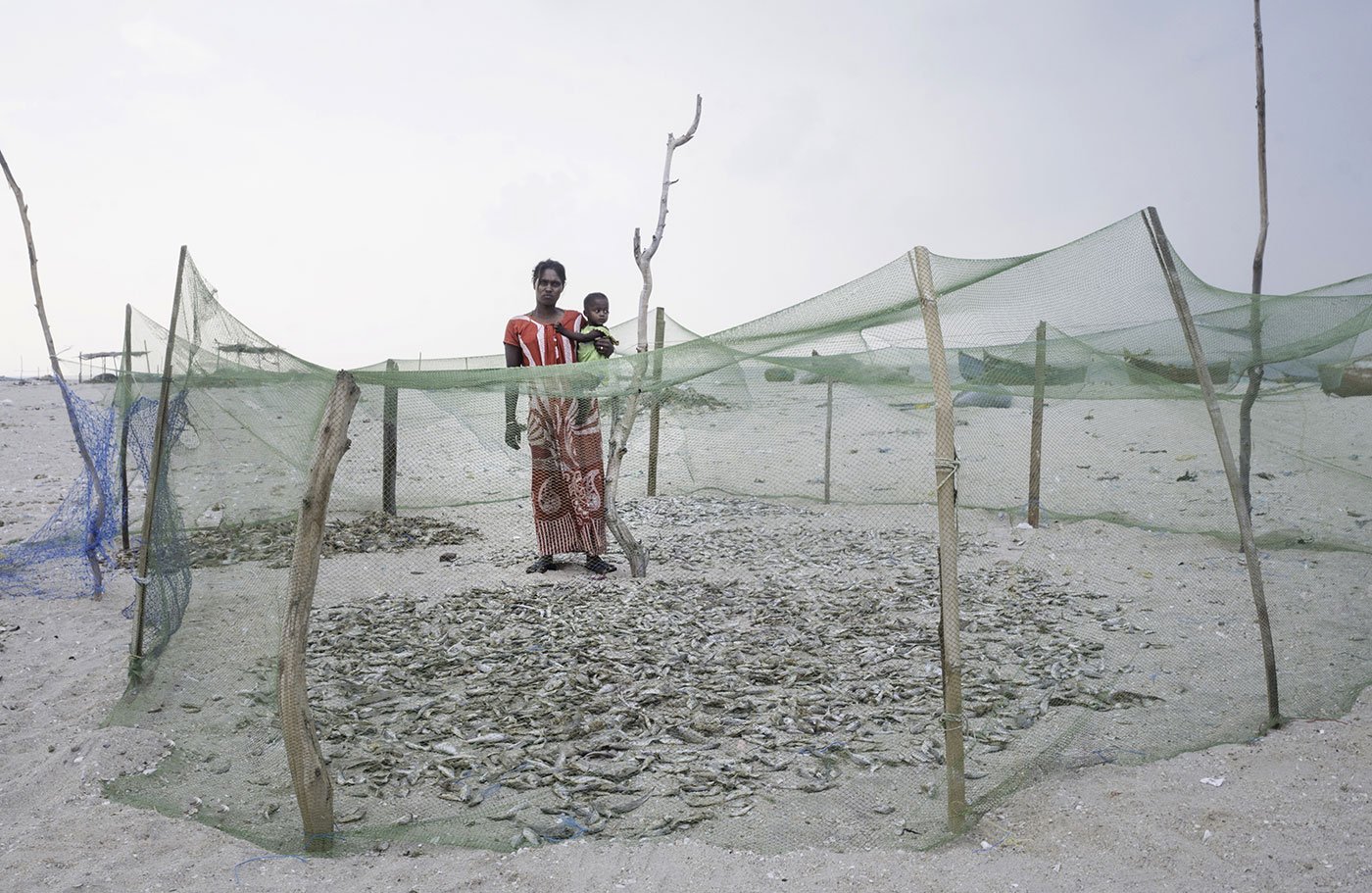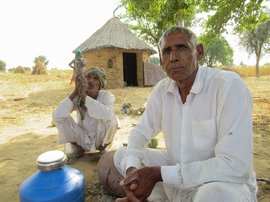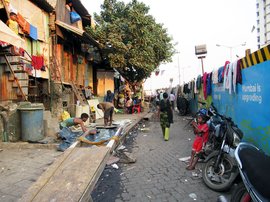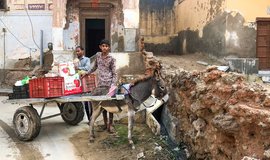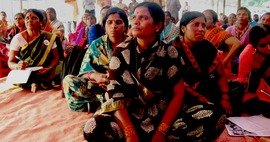Dhanushkodi is a forlorn place – a remote land, covered with white sand, bordered by the Bay of Bengal and the Indian Ocean at the southern tip of India, in Tamil Nadu. It was developed as a small port by the British around 1914, and eventually became a bustling town with pilgrims, travellers, fish workers, traders and others.
Half a century later, in 1964, a massive cyclone that started at midnight on December 22 and went on till the evening of December 25, devastated the port-town in Rameswaram taluk of Ramanathapuram district. Gigantic waves triggered by the cyclone flattened the entire town and killed more than 1,800 people. A train coming from Pamban, some 30 kilometres away, carrying well over a 100 people, was fully submerged.
After the cyclone, the place was variously called ‘ghost town’ or ‘unfit to live’ and left in a state of total neglect. However, almost 400 fish worker families (estimates a local panchayat leader), continue to live in Dhanushkodi and see this barren land as their only home. Some of them are cyclone survivors who have been living here for over 50 years without electricity, toilets or even potable water.
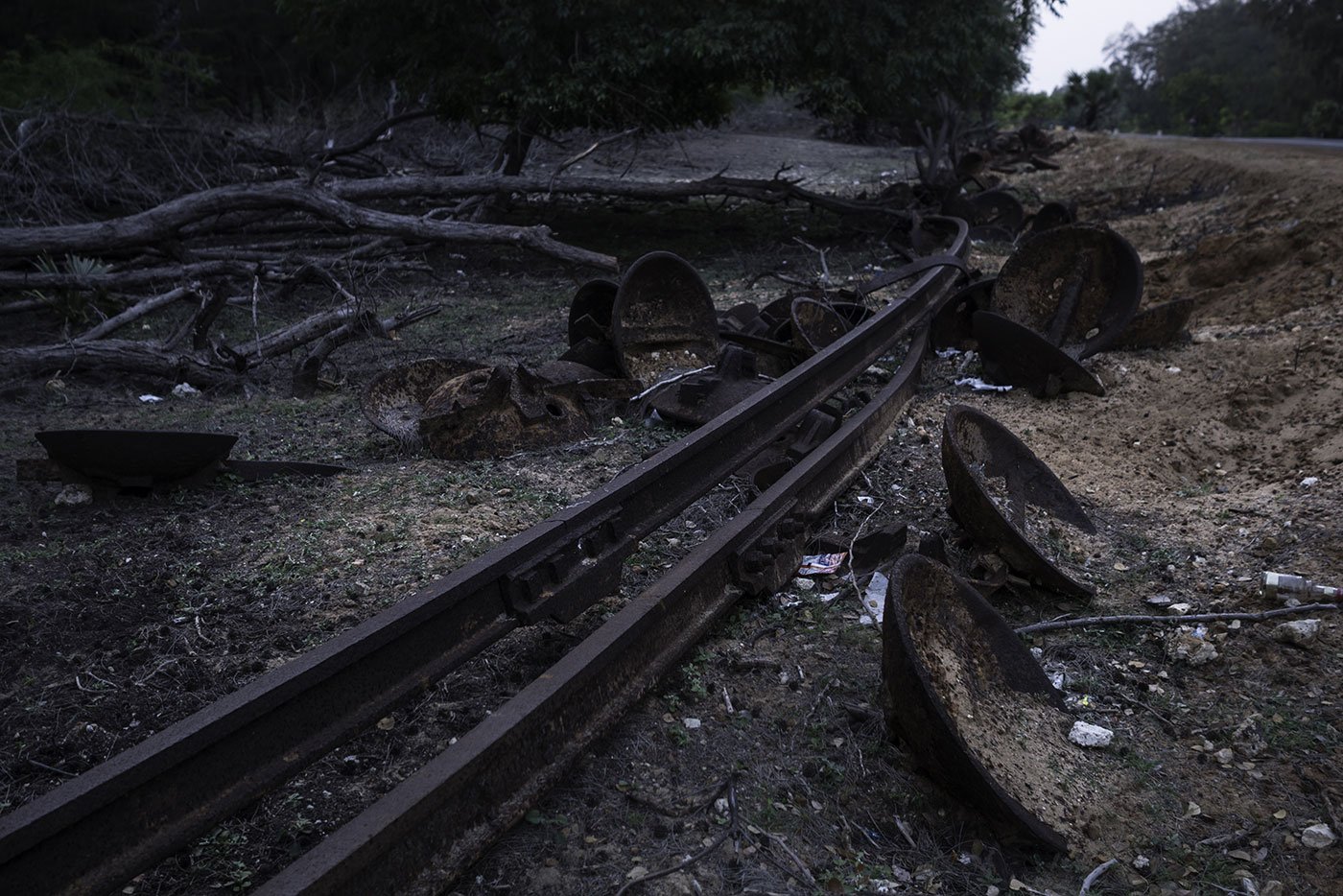
The entire train that was submerged during the cyclone; the ruins of the railway track still lie rusting by the road and are a tourist attraction now.
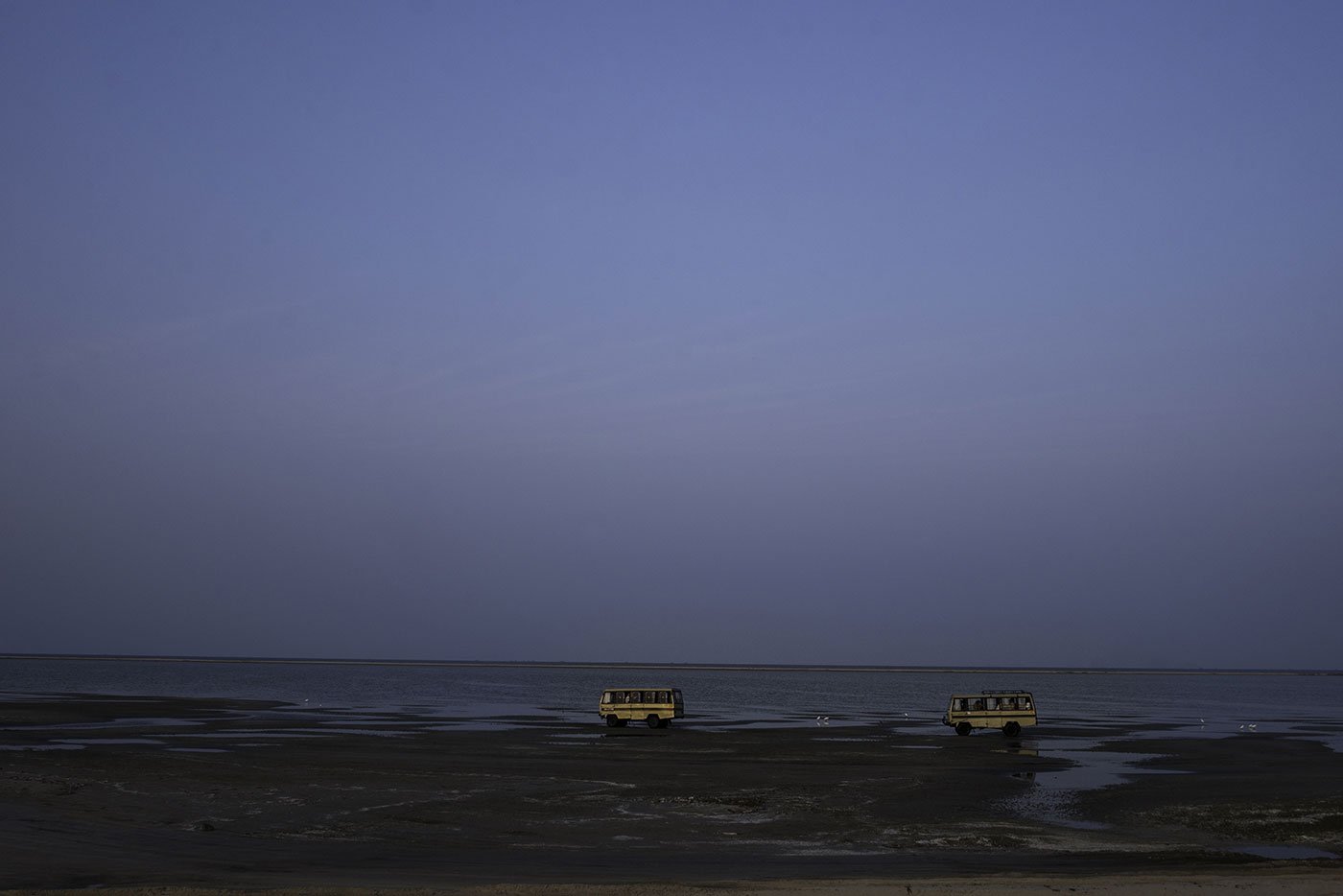
Dhanushkodi is around 20 kilometres from Rameswaram. Tourists and pilgrims come here in vans that ply on the marshy terrain along the beach. The government is planning new and better roads to improve connectivity and draw in more visitors.
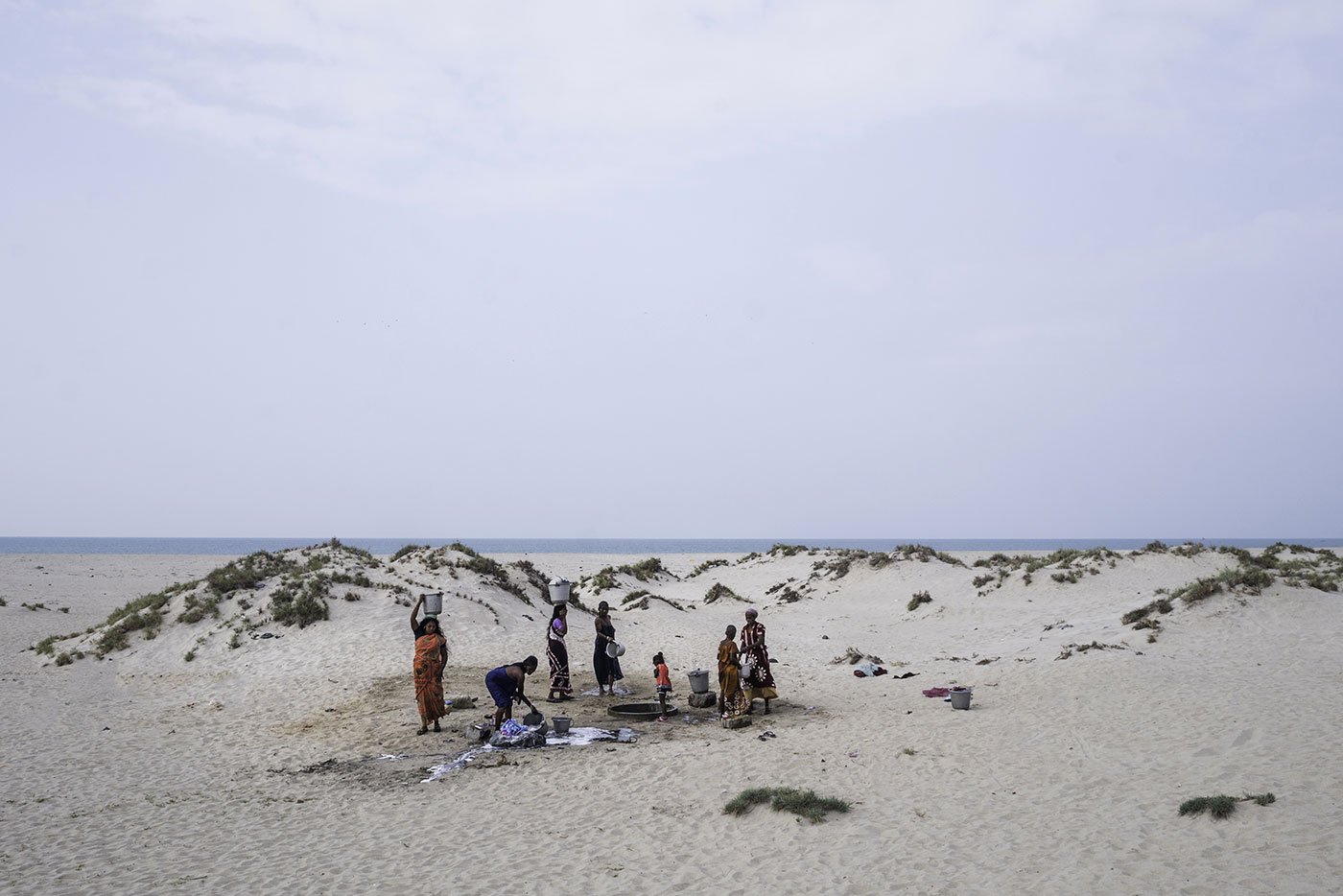
The toilets and bathrooms here are makeshift structures of thatched walls. People defecate in the sand or behind bushes, in constant fear of insects, reptiles or sharp corals swept up by the sea waves. Every week, Kaliarasi tells me, she and other women dig shallow wells, 3 to 4 feet deep (any deeper and saline water seeps in) with their bare hands, in search of water for drinking and for use at home.
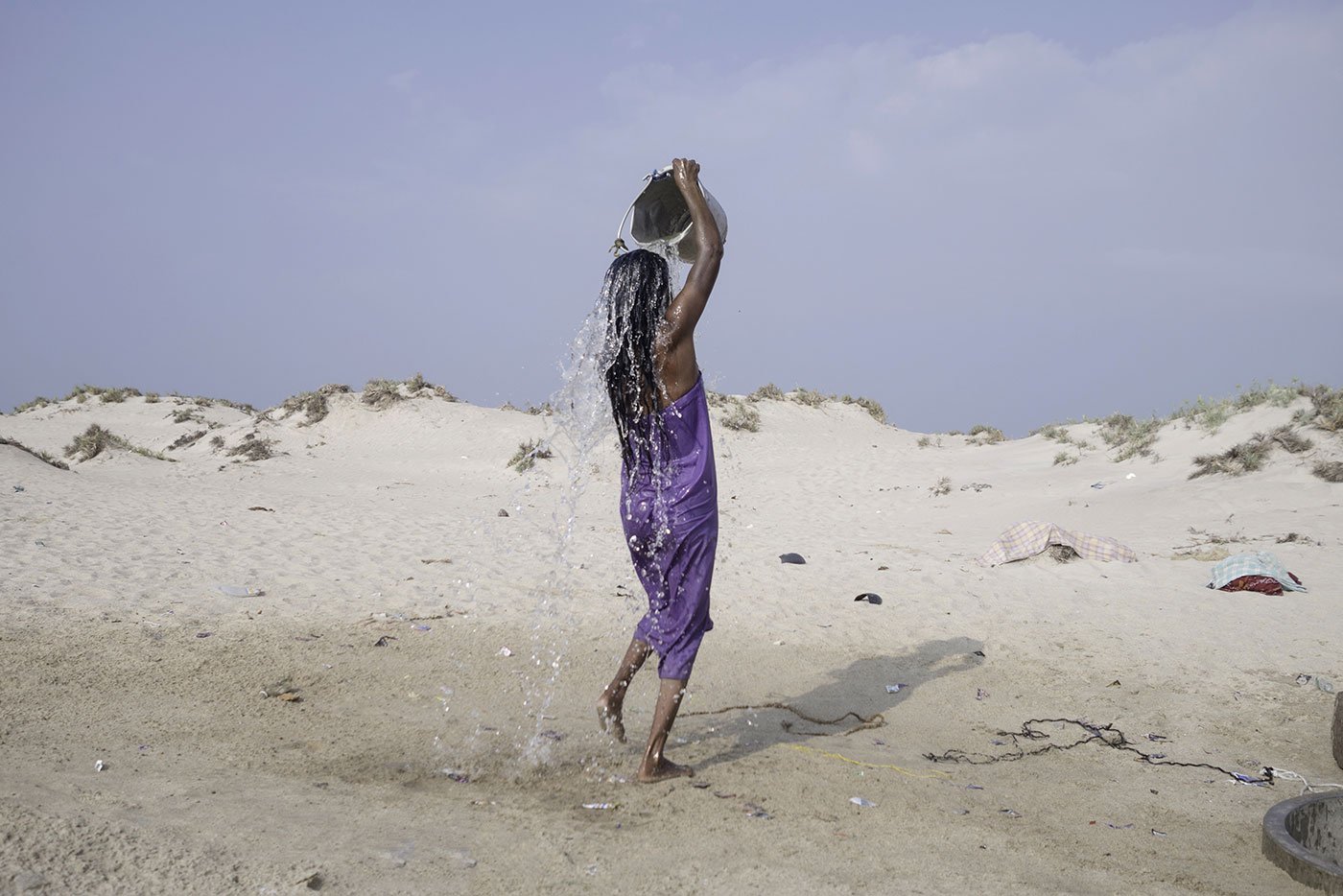
Without any proper sanitation facilities, women of the village are sometimes forced to bathe in the open, by the road. 'We have been abandoned; no one comes and asks about how we live here', they say.
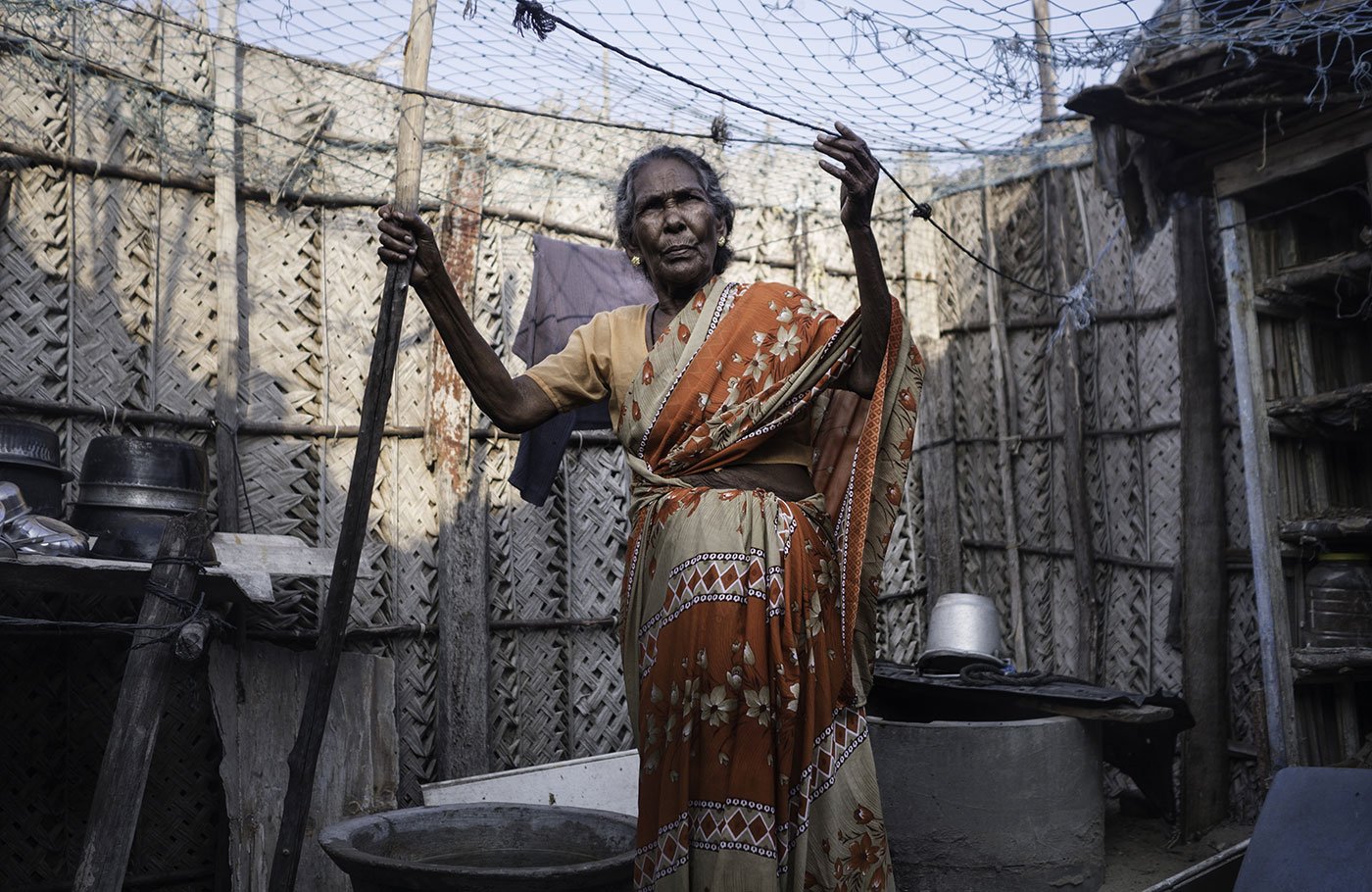
Sayyad, 78, lost her husband in the cyclone. She got no aid from the government but continues to live here. She built her home and tea-shop from scratch and serves tea to tourists who come to see the ruins – including a church and the broken railway tracks. A while ago, she and other villagers received a notice from the government to vacate their homes without any resettlement options; the government plans to ‘develop’ Dhanushkodi for tourism.
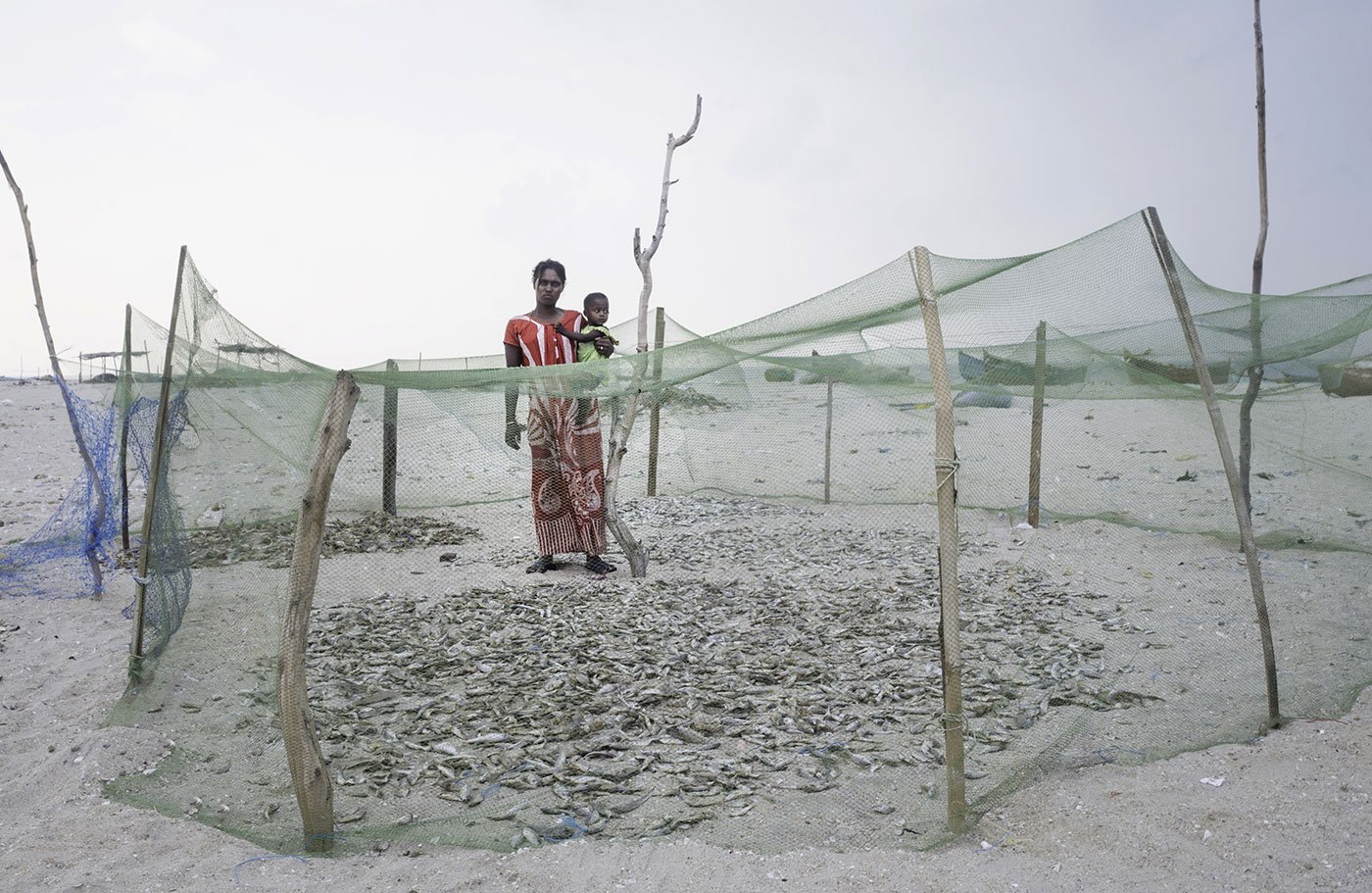
A. Japiyammal, 34, sells dry fish to make a living. Her husband is a fisherman. They too received a notice to vacate their home. The fishing community here relies on traditional methods of reading the winds, stars and waves. After all these decades, it is hard for Japiyammal and others to leave their land and learn new ways of fishing elsewhere.
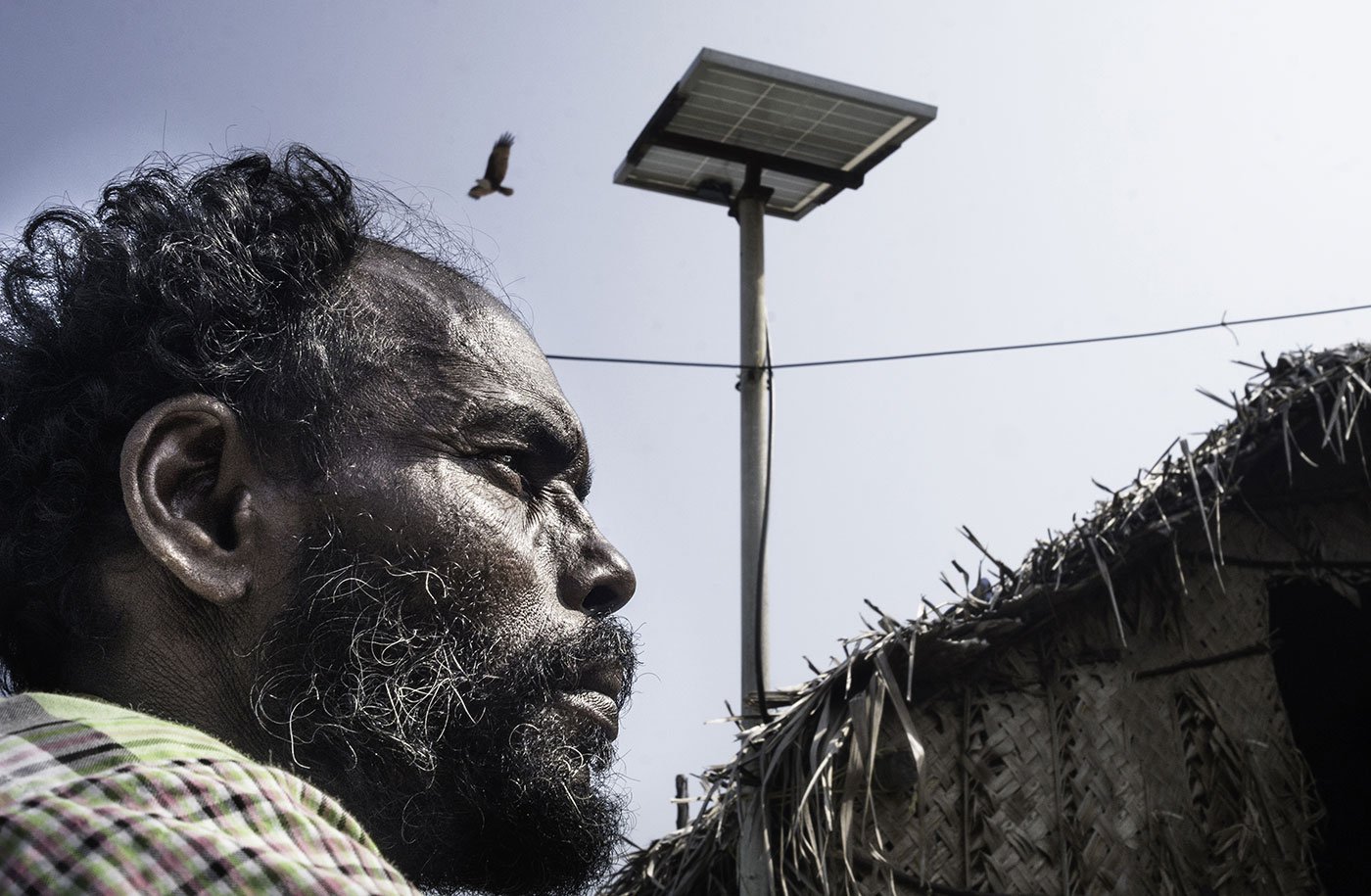
M. Muniyaswami, 50, who has been living on this barren stretch for 35 years, says he got solar power around a year ago. It was supposed to be free under a central government scheme, but a local organisation charged Muniyaswami Rs. 2,000 and then a mediator cheated him and many others. Most of the villagers are still waiting for the solar lights; until then, they continue to use oil lamps, and buy kerosene from Rameswaram for Rs. 60 a litre
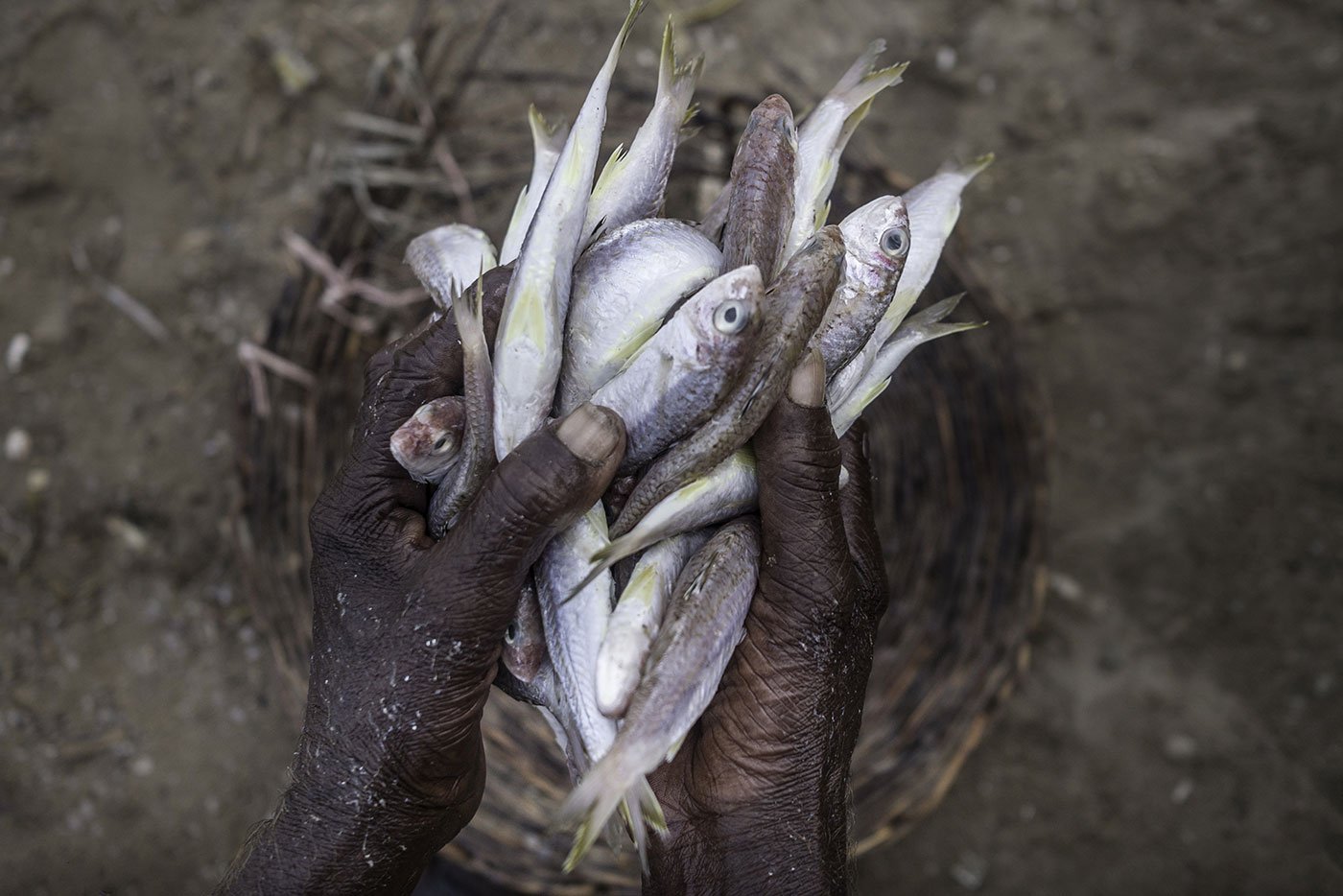
The Sri Lanka border is just 18 nautical miles (33 kilometres) away, and the Sri Lankan Navy has a heavy coastal presence in these waters. The fish workers of Dhanushkodi live in constant fear of being caught if they wander close to the border area. Without proper GPS equipment and training, they are not able to track the exact location of the border. Getting caught means losing their boats and fishing nets – that is, their entire livelihoods. This keeps happening.
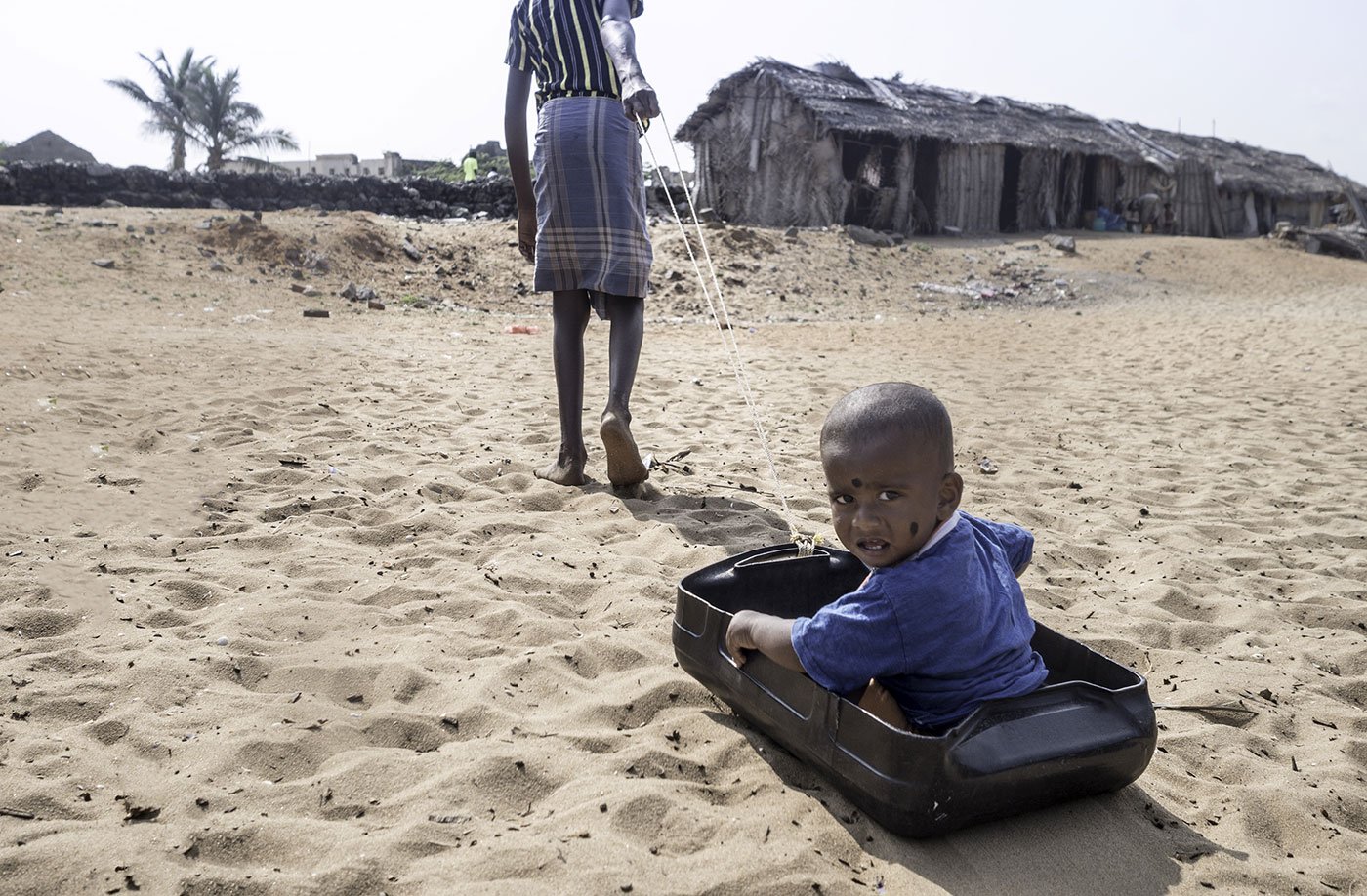
There is only one state-run primary school in Dhanushkodi, and most of the children have to travel the 20 kilometres to Rameswaram if they want to study beyond Class 5. The cost of schooling and travelling is usually more than what most parents can bear.
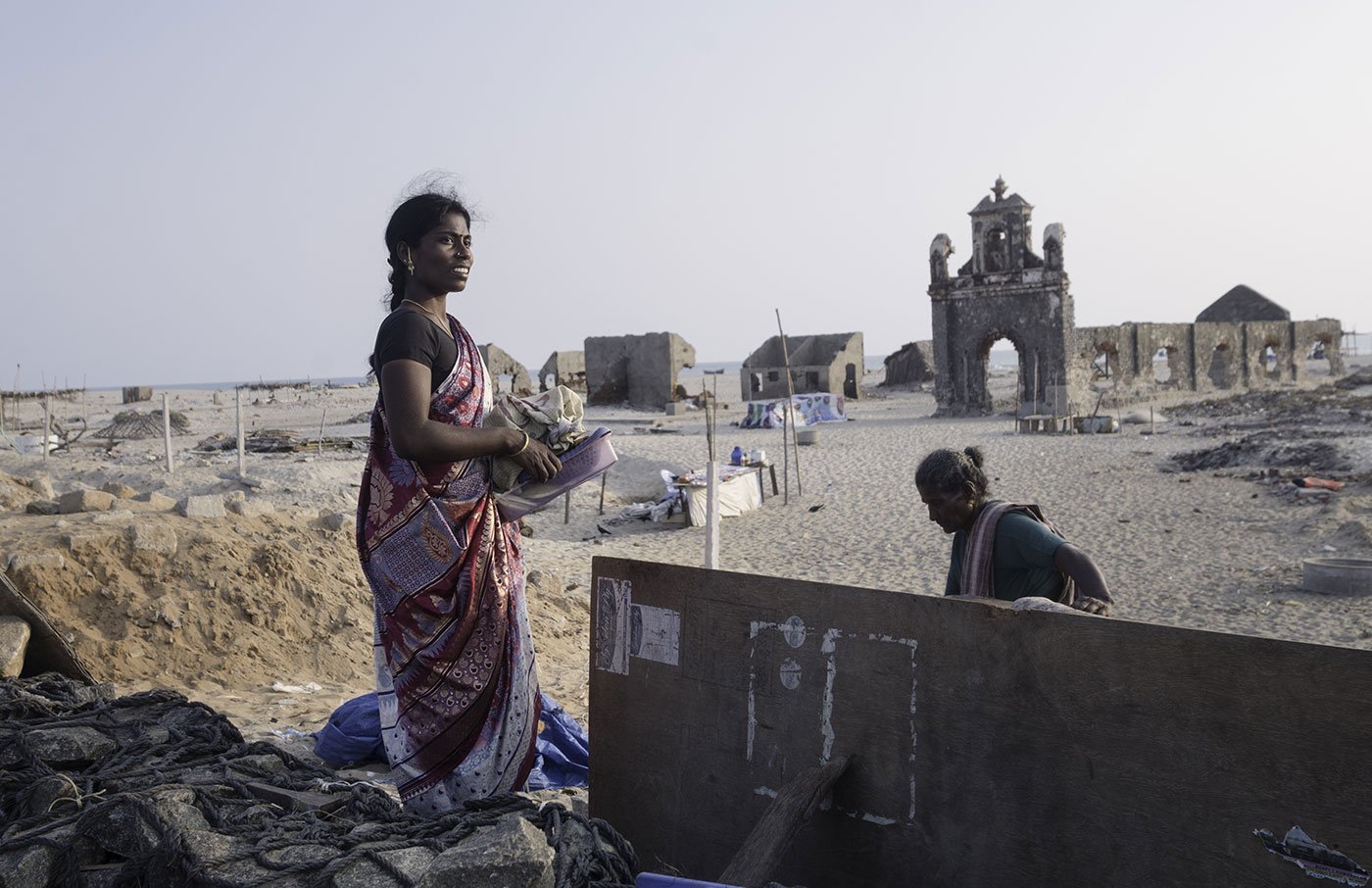
To earn a bit extra, women and children have put up small shops selling sell toys and shells. The ruins of St. Antony’s Church are in the background.
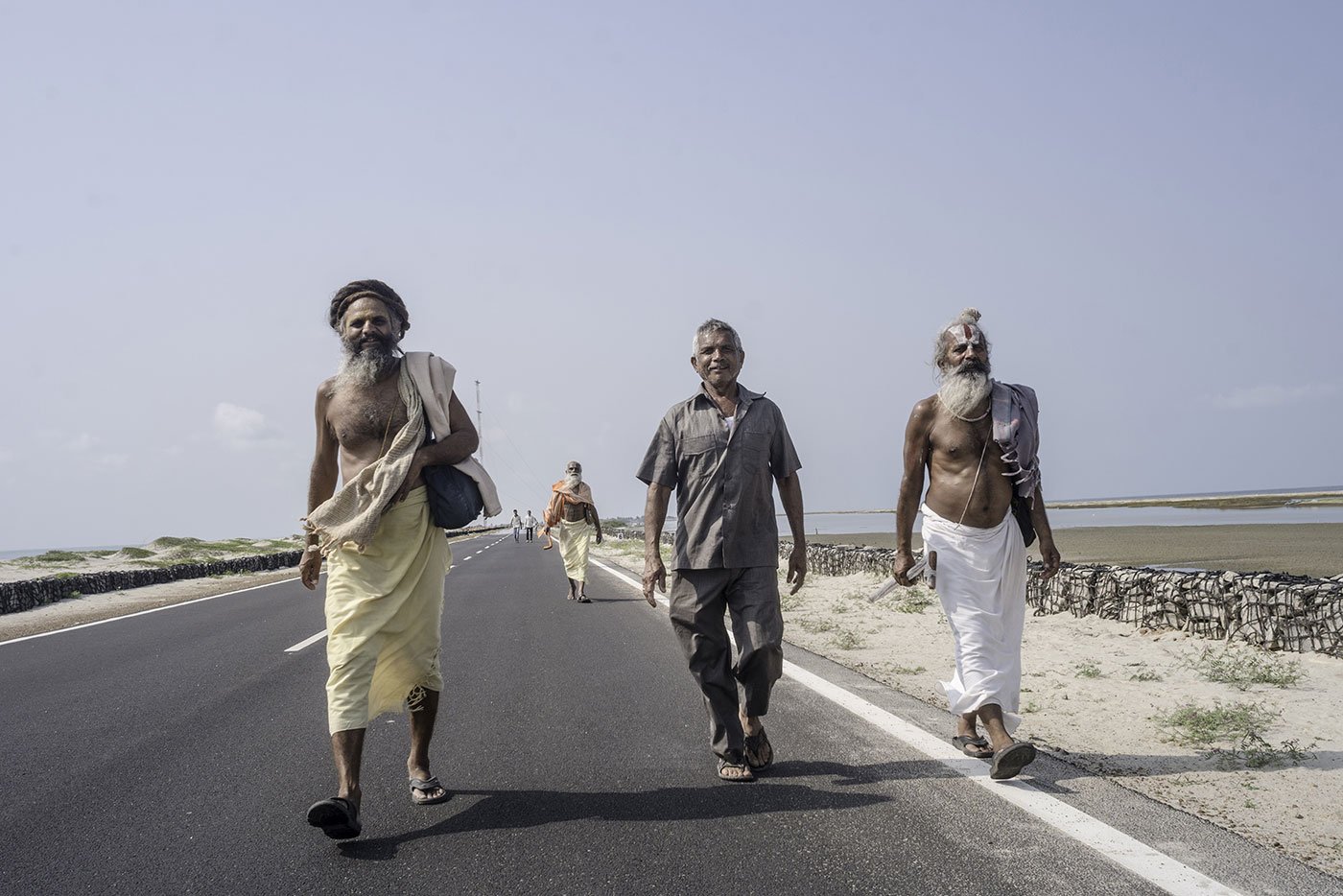
Dhanushkodi is of religious significance for Hindus – it is believed that the Ram Setu bridge originated here. Mythological accounts state that Lord Ram marked this place with the end of his bow to build a bridge (setu) to enter Lord Ravana’s Lanka. This gave the place its name – Dhanushkodi means ‘end of the bow’. The state government is now trying to draw more tourists, and plans include building two new jetties. But the plans seem to exclude the local fish workers, all long-term residents of this coastal border stretch.

The memorial was made from donations, as remembrance of the villagers who lost their lives during the cyclone.
